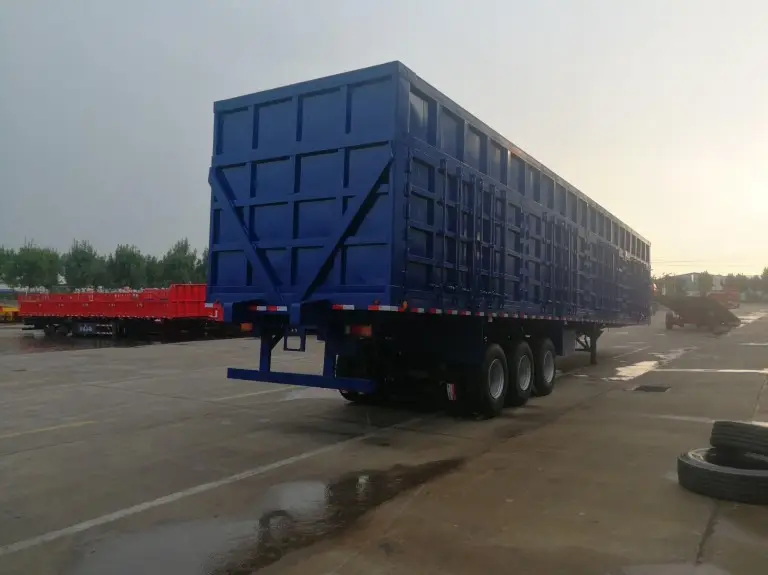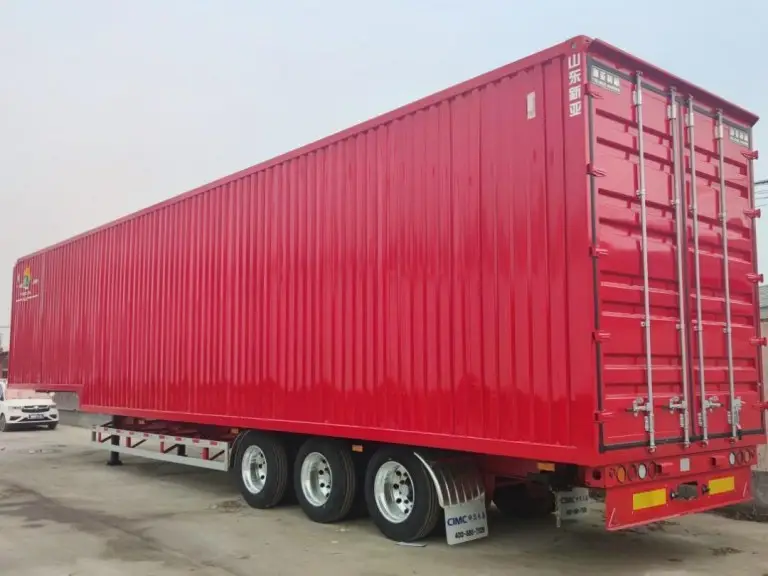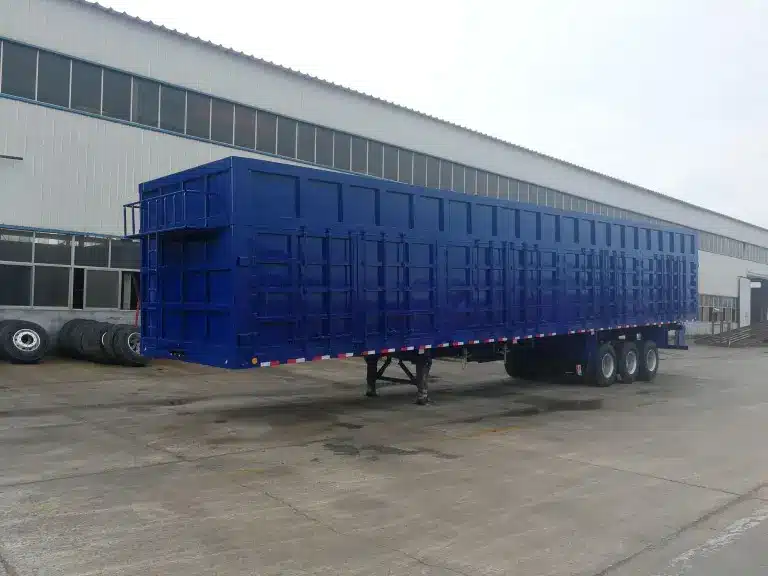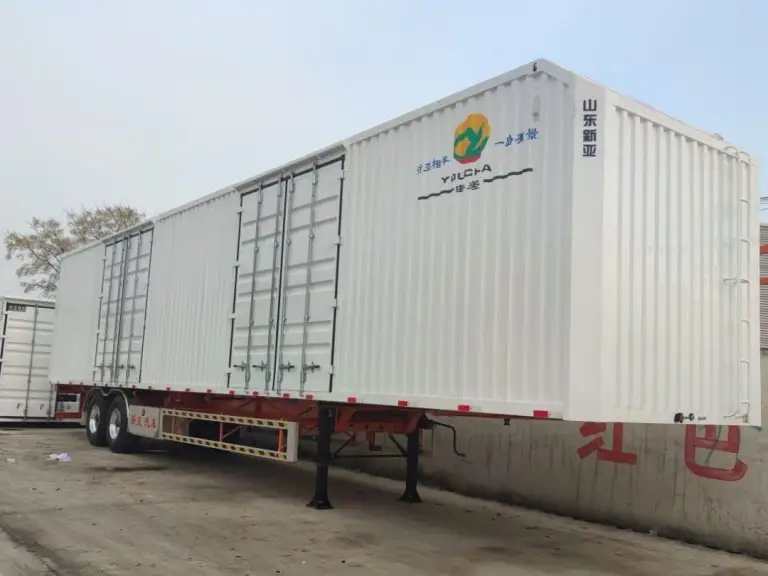Box trailers, also known as dry van trailers, are essential equipment in the logistics industry. Their enclosed design effectively protects cargo from external elements, making them particularly suitable for transporting sensitive or high-value goods. The typical cargo capacity of a box trailer ranges from 42,000 to 45,000 pounds (approximately 19,000 to 20,400 kilograms), though the exact load capacity may vary depending on trailer length, axle configuration, and regulatory requirements. Below is a detailed overview of the specifications and capacity features of Genron box trailers.
Table of Contents
Discover Box Semi Trailer Capacity
Box semi trailers, also known as dry van trailers, are essential equipment in the logistics industry, designed to protect cargo from external elements. Their typical cargo capacity ranges around 42,000-45,000 pounds (approximately 19,000-20,400 kilograms), though this can vary based on trailer length, axle configuration, and regulations. This article explores Genron’s box semi trailer specifications, capacity optimization, comparisons with other trailer types, regulatory compliance, and customization options. Through real-world examples and data-backed insights, you’ll learn how to select and maximize these trailers to enhance your transportation efficiency.
What is a Box Semi Trailer?
Box semi trailers, alternatively referred to as dry van trailers, serve as indispensable tools in the transportation sector, prized for their versatility and substantial capacity across various industries. Their enclosed design stands out as a key feature, effectively shielding cargo from environmental factors, making them particularly suitable for transporting sensitive or high-value items. This structure provides enhanced security and reliability for the logistics field.
The adaptability of box semi trailers is evident in their diverse sizes and configurations, which can be tailored to specific cargo types and industry requirements. For instance, options include adding partitions to improve space utilization or reinforcing door locks to boost security. While this enclosed setup may offer slightly less loading flexibility compared to open trailers, it undoubtedly excels in cargo protection.
These trailers cater to a wide array of sectors, including retail, manufacturing, e-commerce, and food distribution. In the case of food distribution, Genron International Trade has developed and produced box semi trailers with temperature-controlled insulation, enabling clients to maintain product freshness at over 95%. This has not only minimized food waste significantly but also greatly improved customer satisfaction, highlighting the value of box semi trailers in streamlining logistics and supply chain operations.
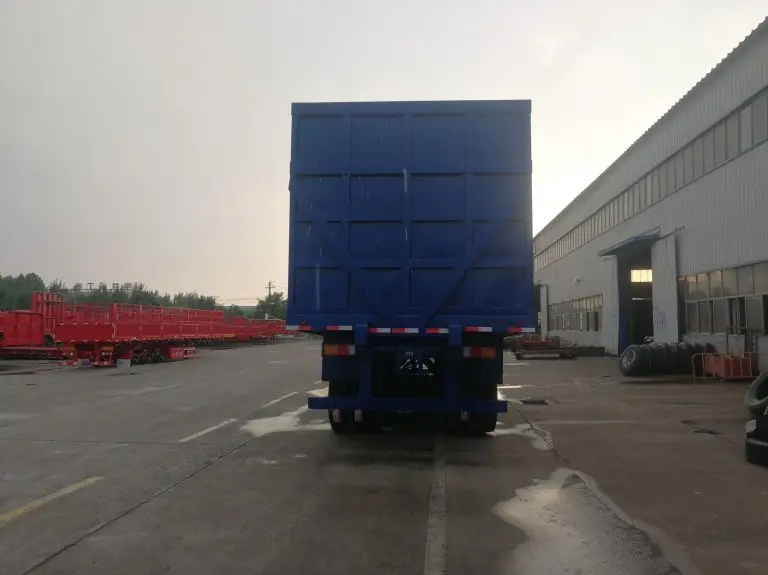
Box Semi Trailer Capacity
At Genron, we recognize the critical role of box semi trailer capacity in fulfilling customer transportation needs. Grasping the dimensions and specifications of our box semi trailers is vital for achieving efficient logistics. The standard internal dimensions are optimized to maximize cargo capacity.
Internal Dimensions
Our standard box semi trailers feature internal dimensions meticulously engineered to deliver the largest possible cargo storage space. Typically, the internal measurements are as follows:
- Length: 48 to 53 feet
- Width: Approximately 98 to 101 inches (about 8.17 to 8.42 feet)
- Height: Approximately 110 to 111 inches (about 9.17 to 9.25 feet)
These dimensions enable flexible cargo arrangement, ensuring maximum space utilization.
Weight Capacity
The weight capacity of box semi trailers is a fundamental aspect for guaranteeing safe and compliant transportation. Here is the range of load-bearing capabilities for standard box semi trailers:
- Standard Load Capacity: Around 45,000 pounds (about 20,400 kilograms)
- 40-Foot Trailer: Effective payload typically between 44,000 to 48,000 pounds
- 53-Foot Trailer: Models designed for heavy loads, with capacities reaching 45,000 to 60,000 pounds
Factors Influencing Load Capacity
- Trailer Length: Longer models (such as 53 feet) generally handle larger loads, as they offer better weight distribution space.
- Axle Configuration: The number and type of axles directly impact even weight dispersion, thereby improving overall stability.
- Cargo Density: Even with a high rated capacity, the actual loadable cargo must account for volume occupancy and even distribution to prevent localized overloads.
By refining dimensions and load capacities, Genron’s box semi trailers can accommodate diverse transportation demands, offering clients efficient and secure logistics solutions.
Begin with a bespoke semi-trailer designed for your exact needs. Whether it’s heavy-duty hauling or specialized cargo, we’ve got the perfect solution to keep you moving forward.
Maximizing Box Semi Trailer Storage Potential
To make the most of a box semi trailer, it’s essential to understand how to optimize its storage potential. Efficient loading and strategic cargo placement are crucial for space maximization and safe transport. Below are the key approaches.
Optimal Pallet Configuration Methods
One effective strategy involves optimal pallet configuration. Straight loading is the quickest technique, using forklifts or pallet jacks to load pallets while leaving just enough room for securing the cargo. Alternatively, rotating pallets can utilize space more efficiently by placing two across the trailer, reducing each row’s length by 8 inches and allowing for more pallets overall.
- Use forklifts or pallet jacks for efficient pallet loading.
- Consider rotating pallets to further optimize space.
- Ensure sufficient space is left for cargo securement.
After adopting the pallet rotation method, one of Genron’s clients improved their trailer utilization by 8%, resulting in fewer trips. This approach not only saves time but also cuts operational costs.
Strategic Loading Techniques for Different Cargo Types
Various cargo types demand distinct loading strategies. For example, securing bulky items differs from handling mixed freight. We offer specialized loading strategies for diverse cargo types, including irregularly shaped items, fragile goods, and mixed loads.
- Apply appropriate securing techniques for different cargo types.
- Maximize vertical space through proper stacking methods.
- Effectively utilize various loading equipment, such as forklifts and pallet jacks.
For fragile cargo, incorporating buffer layers can reduce damage rates by 30%.
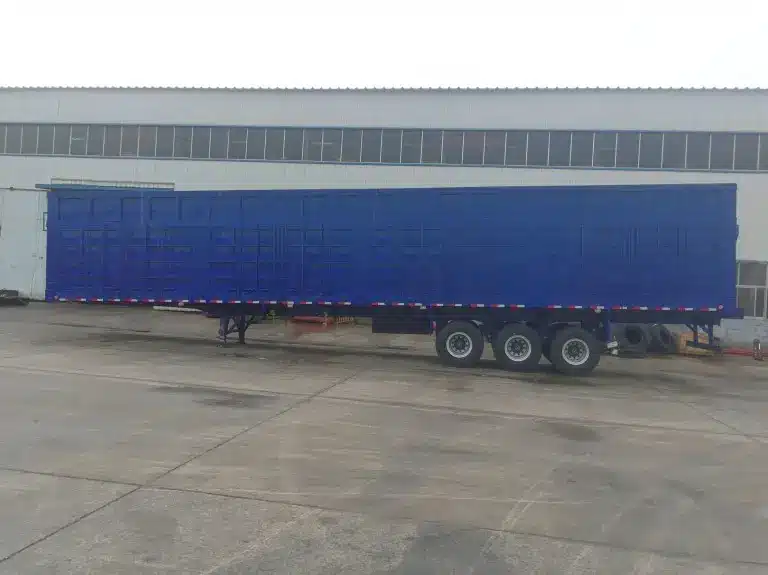
Conclusion
As a leading trailer manufacturers, Genron is dedicated to helping clients optimize logistics efficiency through high-quality box trailer semi. Our trailers are engineered for superior performance and reliability, with customization options to meet the needs of various industries and transportation scenarios. Whether through enhanced dimensions and load capacities or efficient loading strategies, our solutions aim to deliver greater operational efficiency and reduced costs for clients.
By choosing Genron box semi trailers, you’ll gain from our commitment to quality, innovation, and customer satisfaction. What we provide is more than just a trailer—it’s a pivotal tool for boosting logistics efficiency. With proper configuration and operation, you can maximize the trailer’s storage potential, minimize trips, lower operational expenses, and ensure cargo safety and integrity.
Take action now! Reach out to our team for personalized consultation services to discover how Genron box semi trailers can be tailored to your business needs. Let’s collaborate to elevate your logistics efficiency to new heights!
FAQ
How to Determine the Optimal Loading Configuration for Cargo?
To determine the best loading configuration, we take into account factors such as cargo type, size, weight, and the trailer’s internal dimensions. Our team can assist you in developing strategic loading techniques to maximize the trailer’s storage potential.
What Are the Typical Internal Dimensions of a Dry Van Trailer?
The typical internal dimensions of a dry van trailer are approximately 53 feet in length, 98-101 inches in width, and 110-111 inches in height. However, these dimensions may vary depending on the manufacturer and model. Understanding them aids in planning pallet arrangements.
Can I Customize the Interior of My Dry Van Trailer?
Yes, we offer various interior modification options, such as installing shelving, tie-downs, or flooring, to suit your specific cargo needs. Our team can collaborate with you to design a customized interior that enhances the trailer’s functionality.

